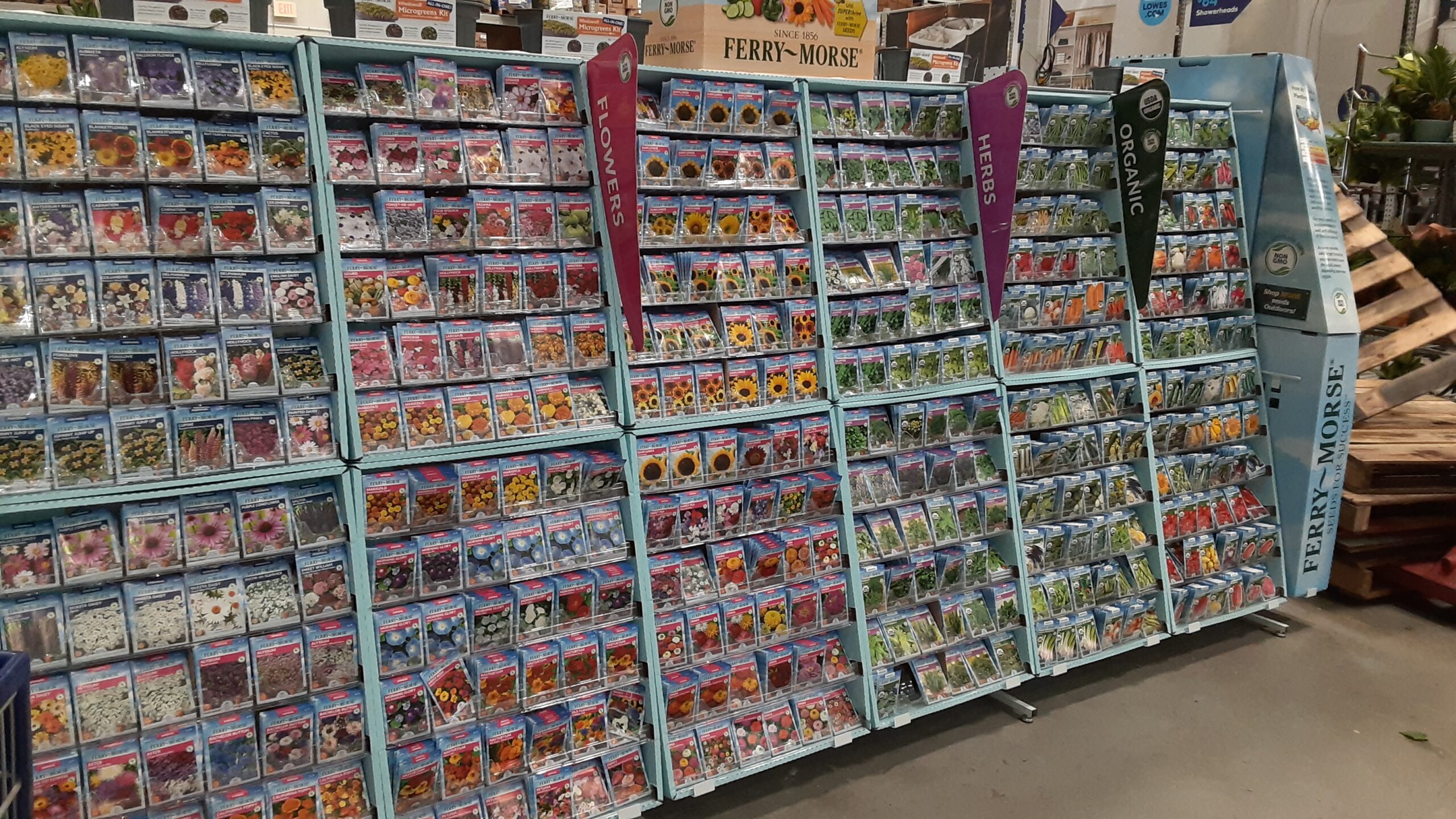This is a highly miscellaneous post about various excitements. It’s so fun to see things waking up—after four long months seeing nothing green except the fake pine tree cell tower near State Line and 79th Street. Miraculously, many of the plants from last year survived—the agastache, the achillea—although others, I’m sad to say, did not. For instance, I see no sign of life around the Eupatorium dubium ‘Baby Joe,’ which I was counting on to solve my problems: all the benefits of Joe Pye Weed but just thirty inches tall. It’s too early to despair, however. It may emerge late, like the swamp milkweed. That may look dead now but I know better.
Spring cleanup: still waiting, mostly
I’ve been conservative about cutting down and cleaning up. In past years I’ve killed many things by being too gung-ho too early. I’m also enthusiastic about Roy Diblik’s “Know Maintenance” approach. He recommends leaving perennial beds untouched in winter and mowing them in March, I assume before bulbs sprout. He then leaves stalks on ground to decay around the plants like they do in nature. This makes sense to me. I’ve been hearing a lot about how it’s important to wait until we’ve had a string of fifty-degree days before cleaning up to protect insects overwintering in the stalks and canes. I compromised and sheared back half the switchgrass with clippers and left it where it fell.
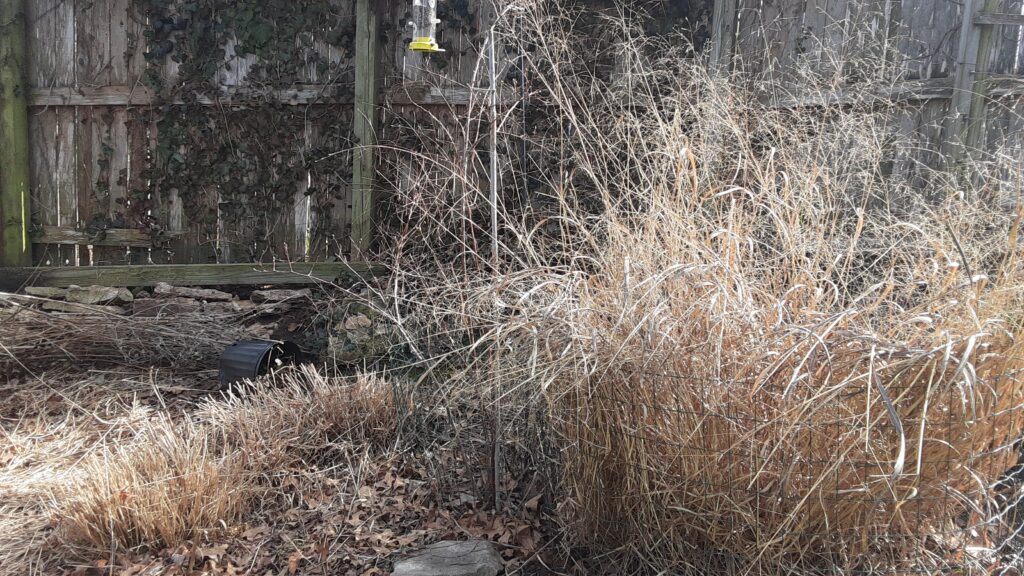
Although I have ordered some plants from Missouri Wildflower Nursery to pick up at the Kansas City Native Plant Sale on April 16, most of what I plan to do this year is move things. Tiny leaves sprouting around the bases of the rudbeckia signal it’s time to begin this year’s relocation project. I’d like to keep as many plants as possible but move them to the back of the beds—despite warnings from my knowledgeable friend, who insists this variety is the wrong scale for my yard. Rudbeckia subtomentosa reaches a height of 60”. So do I! The late-summer blooms are fabulous. Even the stems are fragrant. To move the first one, I just dug a hole and plopped it in. I have no concern for it at all. I can see it’s going to thrive. I have probably a dozen rudbeckia plants, plus some reseeded, so I may have some to give away soon.
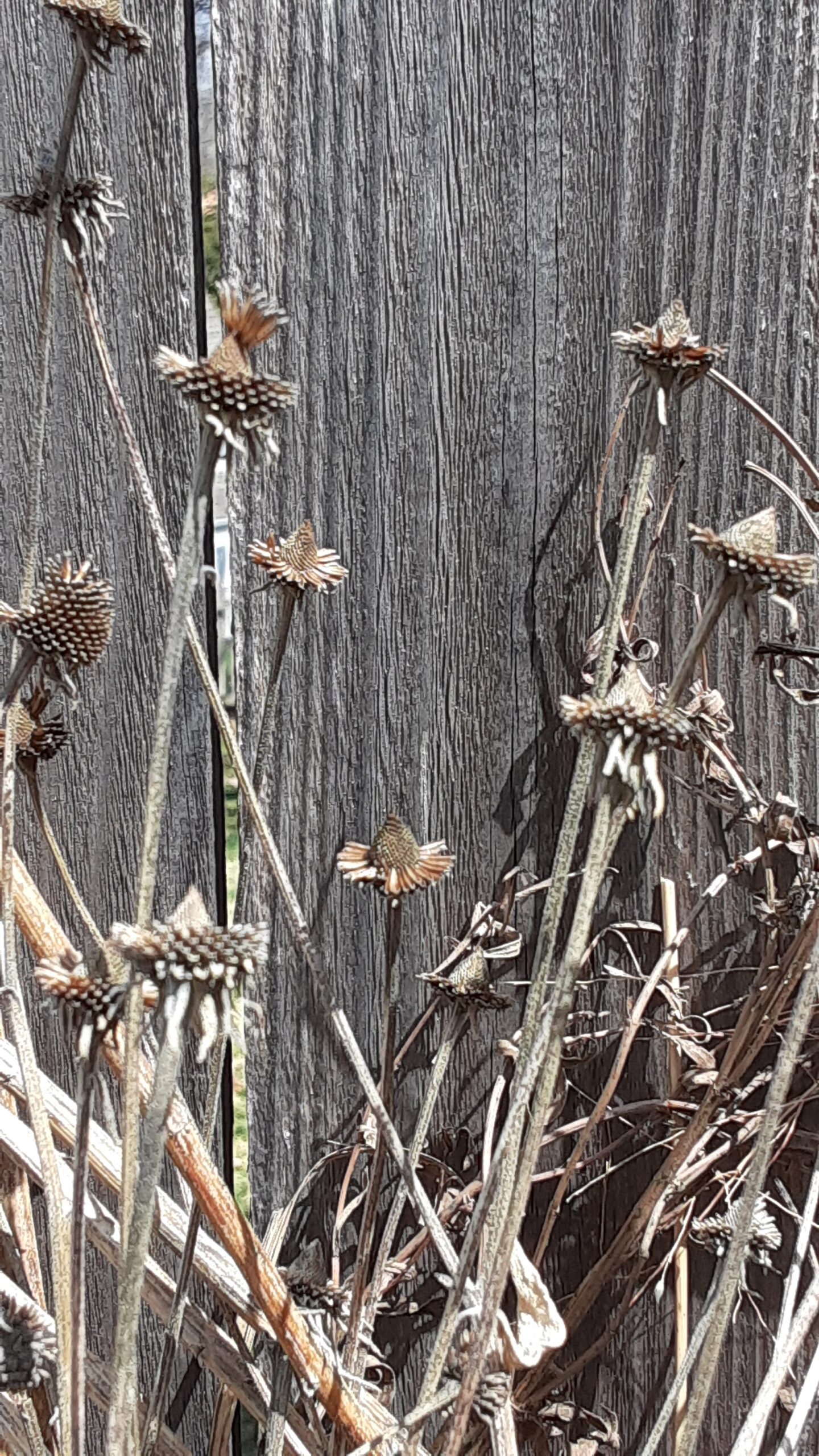
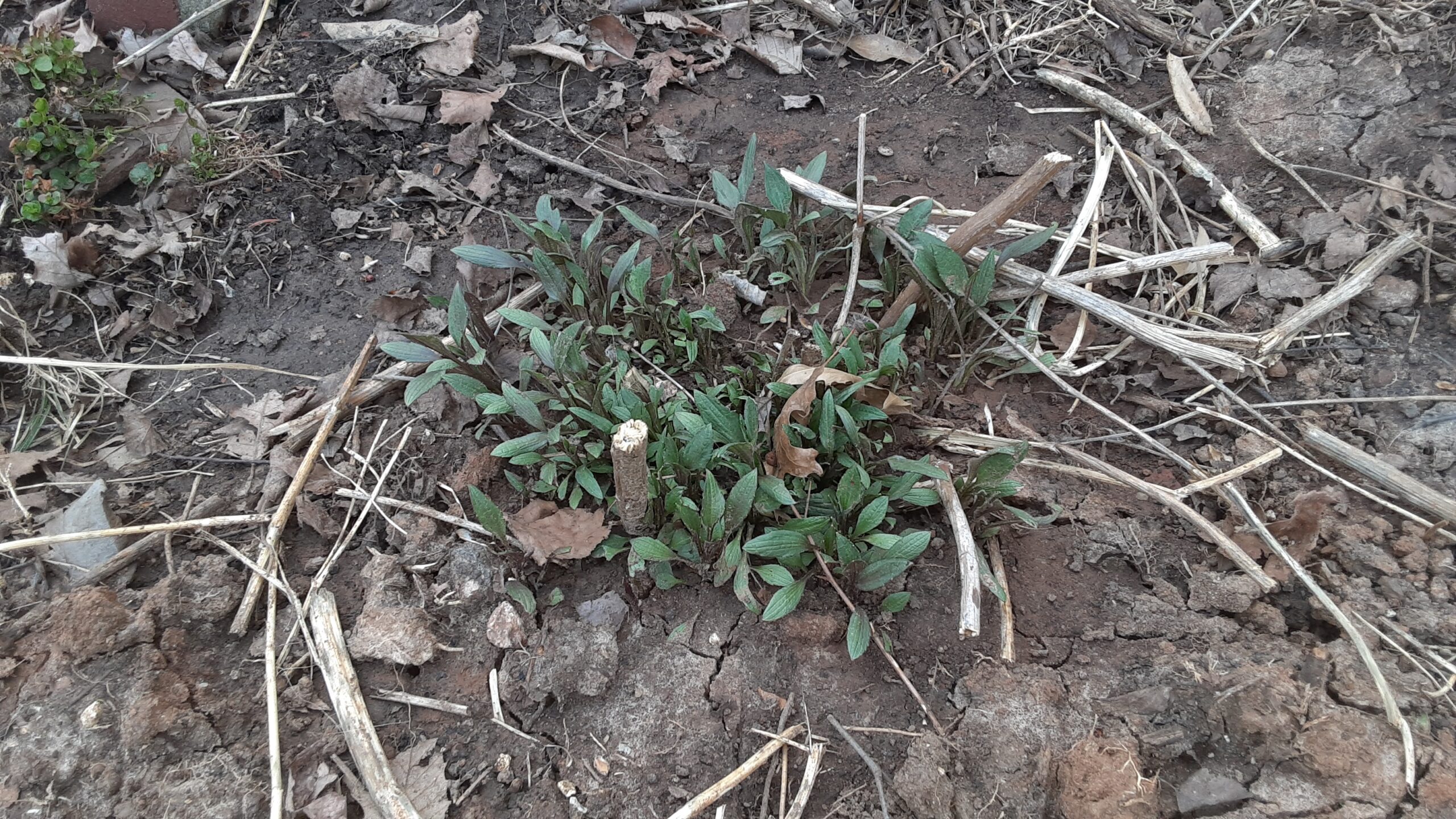
Only a special kind of person would be interested in these pictures.
Last summer I dug up this milkweed plant and left it sitting in a big hunk of mud on the patio for months while I tried to decide what to do with it. Finally I put it in the ground. I barely covered the roots.. It was so tenacious of life, I felt it deserved a chance. Plus, I don’t know if I could kill it if I tried.
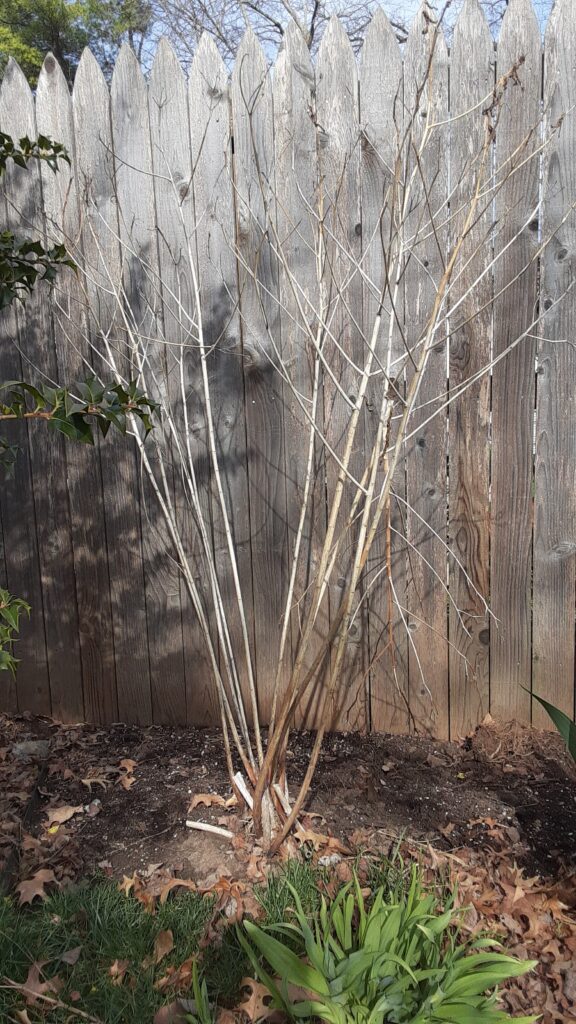
Starting seeds: don’t do it my way
The excitement of seeing seeds sprout is hard to match. I’ve tried a bunch of things over the winter. I scattered wildflower seeds over the dirt in the raised bed, filled flats and set them in the windowsill. I even cut up milk jugs to make a homemade greenhouse thingy. From most, I got nothing. The only seeds that have sprouted were outside in the bed. They’re a green mist, almost invisible to the eye, too tiny to photograph, but so exciting. (The only problem is, I don’t remember what they are.)
Yesterday we were having some people over and as I leaned down to sweep the muddy trays of dirt on the windowsill into the trash, I noticed … sprouts.
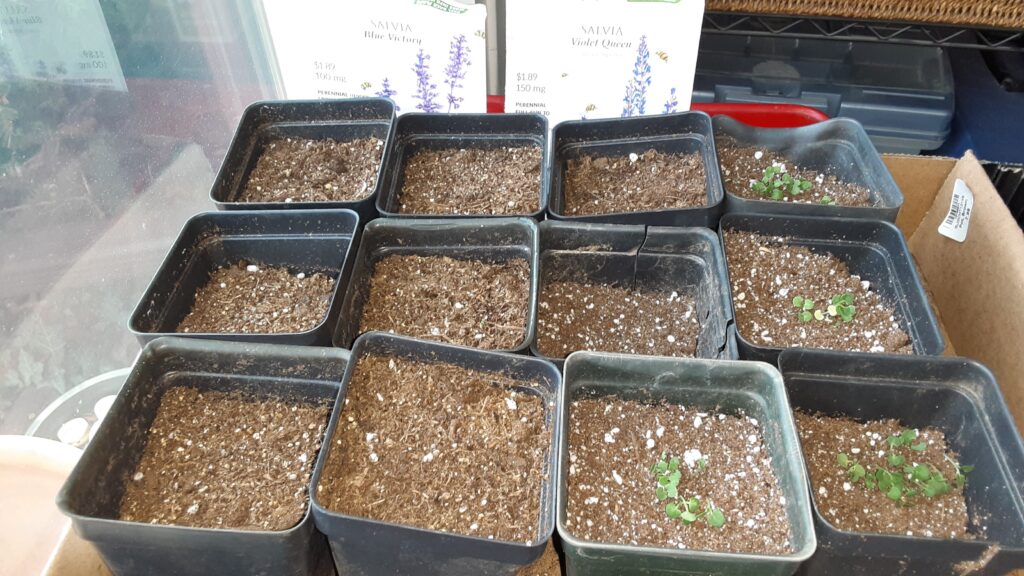
These are salvia.
From this it looks like I’m going to have a lot of salvia plants, but I know from experience that they could still die. Usually I drown them. Here’s a question. Why did some sprout and not others?
The ones on the right sprouted. Not the ones on the left. Could it be the seed starting medium? Half are in new and half old. The new stuff from Family Tree was noticeably fluffy, soft as ash. It is also two-thirds Canadian sphagnum peat, so I can’t recommend it, as peat bogs store carbon, which digging up releases. But it’s so magical! I’ll use up this bag and promise to buy no more.
Now for something completely different: Epicenter 2022
I recently started a new job at JCCC. (You could say I returned to working at JCCC, because I taught there in the early 2000’s.) I was excited to hear about this year’s Epicenter 2022, a free conference focusing on environmental writing. The keynote speaker is Amy Brady, Executive Director of Orion Magazine. It takes place this coming Thursday, April 7, 2022—right down the hall from where I work. It’s intended for high school students, but I asked if I could sit in and they said yes.
I don’t know much more about it other than what’s listed on the website, but I plan to go and will share what I learn.
April could be the cruelest month because of the way it gives and takes. A hard freeze could wipe out all these blossoms. But spring won’t be stopped.
Each Spring is unique, but it’s interesting to compare the years. Are we a little late this year? I passed these yesterday and thought you might like to look back at last year’s show.
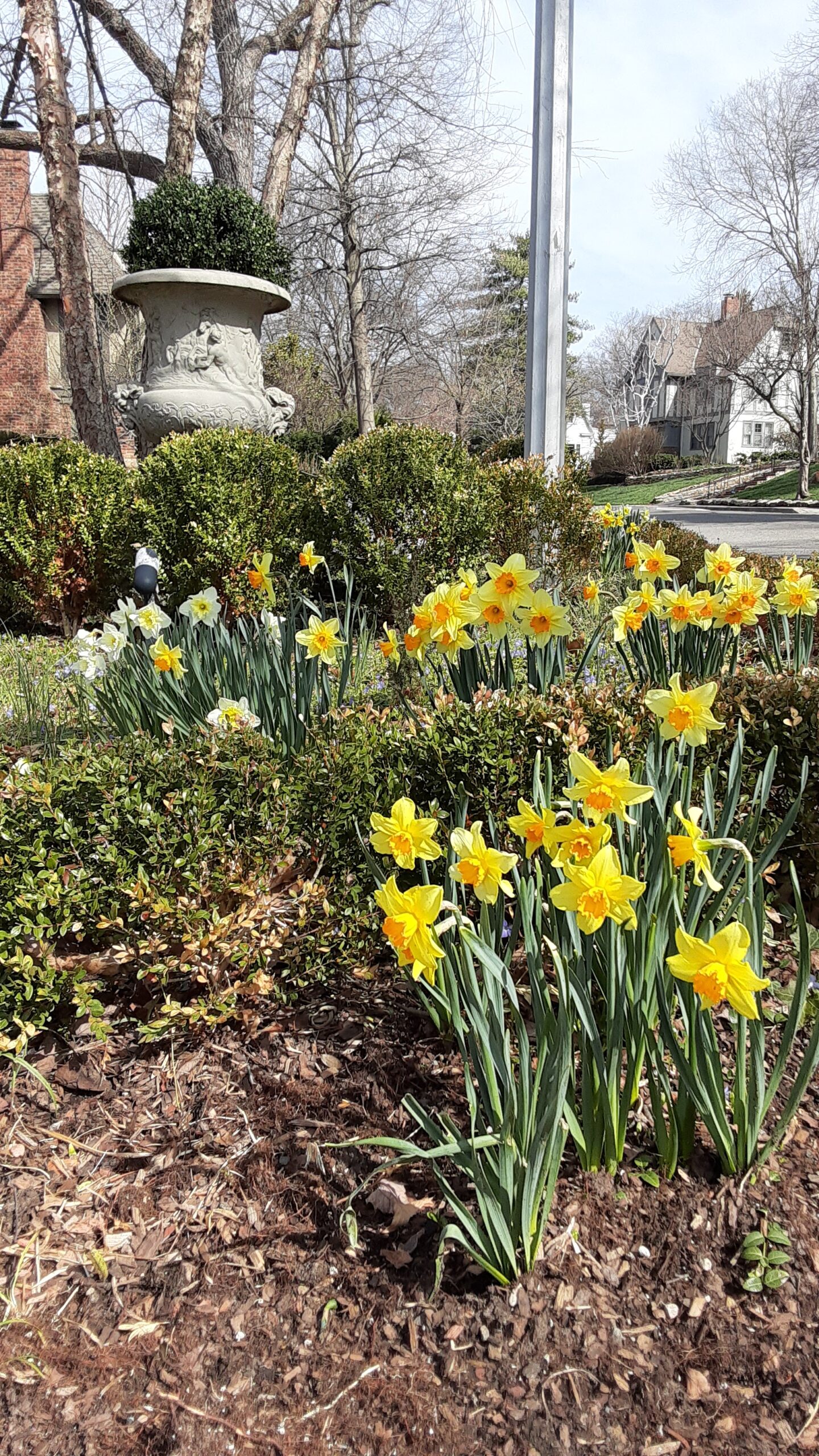

Thanks for reading and happy gardening!
